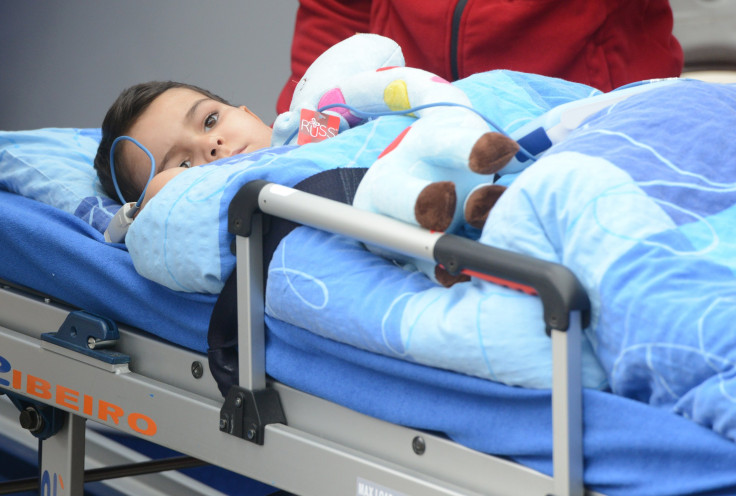Proton Therapy May Improve Survival Outcomes, Reduce Long-Term Effects For Pediatric Medulloblastoma

Medulloblastoma is the most common of the embryonal tumors, according to the American Brain Tumor Association (ABTA). It's relatively rare, but when it does occur, it's a "fast-growing, high-grade tumor." And according to a new study published in The Lancet Oncology, the best treatment may be proton radiotherapy.
Not only does the study suggest proton radiotherapy can improve survival outcomes, especially among young cancer patients, but it could also result in fewer long-term effects compared to photon radiotherapy. Per the study's press release, proton radiation is more "precisely focused" than photon radiation, which lessens the chance healthy tissue surrounding the target area will be affected. Lead study author Dr. Torunn Yock, of the department of radiation oncology at Massachusetts General Hospital, said the therapy has proven to be successful and safe at experience centers.
To see for herself, she and her team analyzed 59 patients aged 3 to 21 who had received proton therapy for medulloblastoma at Massachusetts General Hospital from 2003 to 2009. Each participant had undergone surgery to remove as much of the brain tumor as possible, and received chemotherapy before, during, or after proton therapy. Participants were also measured for common long-term side effects linked to the therapy: hearing loss, reduced cognitive function, and lower levels of important hormones.
Of the participants enrolled, 12 died of the malignant brain tumor and one from a traumatic brain injury. Twelve percent of patients experienced hearing loss after three years of treatment, while 16 percent experienced this loss after five years. Both percentages were compared to the 25 percent of patients who lost their hearing during photon radiotherapy. Participants receiving proton therapy experienced less serious cognitive effects than people receiving photon radiotherapy, too.
"Our results indicate that proton therapy maintains excellent cure rates in pediatric medulloblastoma while reducing long-term side effects, particularly in hearing and neurocognitive function, and eliminating cardiac, pulmonary, gastrointestinal and reproductive effects," Yock said. "While we are currently investigating quality of life differences between proton and photon treatment, I truly believe that — particularly for the youngest children — the ability to offer them proton therapy can make a big difference in their lives."
Doctors currently treat medulloblastoma with a combination of chemotherapy and radiotherapy given the tumor’s location — it's always in the cerebellum, the lower, rear portion of the brain, the ABTA reported. So a more precise radiation could preserve more healthy tissue and improve health outcomes.
The thing is, proton radiotherapy is not yet widely available in the U.S., Yock said. It's potential, however, is increasingly recognized and may be an available alternative to photon-based treatments in the future.
Source: Yock TI, et al. Long-term toxic effects of proton radiotherapy for paediatric medulloblastoma: a phase 2 single-arm study. The Lancet Oncology. 2016.



























